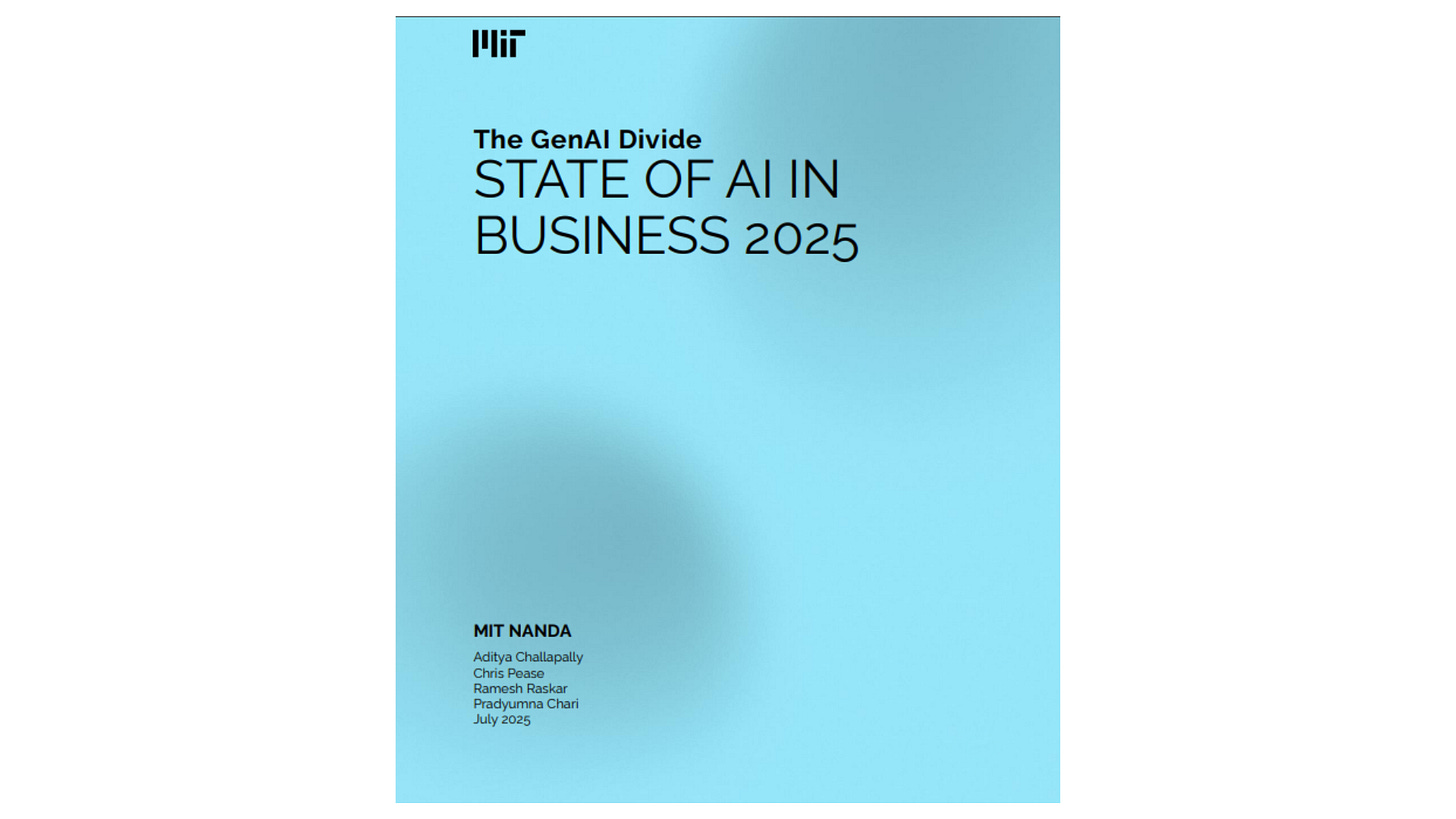The "GenAI Divide" Report: A Masterclass in Missing the Point
Don't read the report and ask, "How can we be in the 5%?" Read it and ask, "How do we find, fund, and scale the 'Shadow AI' that is already thriving in our own company?"
In this edition of the AI Security Brief: MIT’s NANDA study claims that 95% of generative AI pilots at companies are failing. The actual story does not involve the failure rate.
The main argument of MIT’s NANDA study states that 95% of organizations fail to implement AI successfully. Teams remain in "pilot purgatory" by spending money on attractive tools which fail to generate any meaningful profit and loss results.
This is presented as a shocking discovery. It's not. Anyone with a LinkedIn account and a healthy dose of skepticism could have told you that.
The actual story does not involve the failure rate.
The report approaches the real story about the extensive unrecognized civil war that exists within every organization—before it chooses to avoid it.
The actual divide runs between policy and people rather than between companies.
The Report's Actual Finding
The most significant finding in the entire 26-page document concerns what it calls the "Shadow AI Economy" (Page 8).
"Only 40% of companies reported buying official LLM subscriptions yet workers from more than 90% of surveyed companies use personal AI tools for work purposes."
The Blunt Translation
The formal, centralized, top-down AI initiatives are a complete failure. The present system functions with too many restrictions while it moves at a slow speed and stays disconnected from real-world situations.
Employees are outsmarting their IT and leadership teams by using their personal ChatGPT and Claude accounts to create real value for the company while keeping it secret from their superiors. This is the entire story.
The "GenAI Divide" does not refer to "Builders vs. Buyers" or "High Adoption vs. Low Transformation."
The real divide is between:
The "Official AI" world operates through endless committee work and procurement delays and risk evaluations and tool limitations which corporate policies enforce before deployment. This is where the 95% failure rate lives.
The "Shadow AI" world: A dynamic, underground ecosystem where employees, driven by pragmatism, are actively solving business problems, increasing their own productivity, and delivering quiet ROI without permission.
The report's authors identify this as a "bridge." It's not a bridge; it's a mutiny.
The Investment Bias: Chasing Vanity Metrics
The report correctly identifies that 50-70% of AI investment goes to Sales & Marketing (Page 9). The text presents this as a bias toward "easier metric attribution." Let's call it what it is: vanity.
Leaders are putting their money into the most visible and board-friendly functions. The belief that AI-generated ad copy and flashy sales dashboards represent real progress drives their desire to view these visual elements. They haven't figured out how to monetize it, but it makes for a great slide in the quarterly business review.
The actual work of back-office automation in finance procurement and operations receives insufficient funding. This is where, as the report quietly admits, the "highest-ROI opportunities" actually are (Page 10). The ROI comes from replacing BPO contracts and agency fees instead of achieving slightly better email subject lines.
The Verdict
This report is a failure of nerve. It gathers just enough data to hint at a revolutionary truth but packages it in a way that won't offend the very executives who are causing the problem.
The main issue stems from leadership rather than technology. The main obstacle to scaling AI does not stem from "learning" or "brittle workflows" according to the report. It's a crisis of leadership. Executives either fear empowering their teams or they are so fixated on centralized control that they prevent meaningful experimentation from happening.
The only operational AI system is "Shadow AI". The report should have been titled "Thank God for Shadow AI." It's the only reason these companies are getting any value from this technology. The fear of employees to report their job-improving tools to their bosses reflects poorly on corporate culture.
You are not "Late to the Party." The 95% failure rate indicates that the game has not yet begun. The company that reveals its shadow AI systems to sunlight holds the competitive advantage over the one with the biggest AI budget. The approach requires trusting employees while providing them with experimental budgets to support the existing bottom-up innovation that occurs in the dark.
The solution does not require finding a new vendor or selecting a better model because the answer requires a complete transformation of trust and control systems.
Don't read this report and ask, "How can we be in the 5%?"
Read it and ask, "How do we find, fund, and scale the 'Shadow AI' that is already thriving in our own company?"
Rob T. Lee is Chief of Research and Chief AI Officer, SANS Institute


